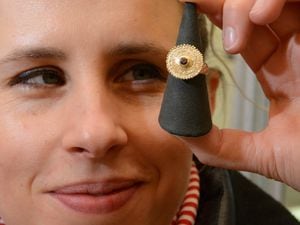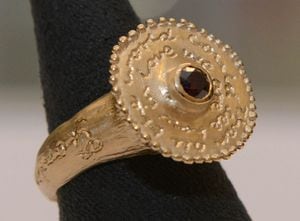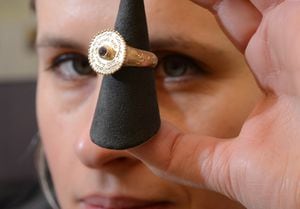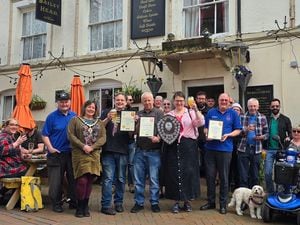Diamond ring immortalises illicit war-time love story
It was an illicit war time love affair that could have been lost to the sands of time but now a new diamond ring has been created to immortalise the story.

Hundreds of Shropshire residents have come together to make sure the forbidden relationship between Oswestry-based artilleryman Gilbert Bradley and infantryman Gordon Bowsher is remembered for decades to come.
Hundreds of love letters were written by romantics old and young to be burned and turned into a commemorative red diamond set in a new gold ring as part of a project to immortalise the young soldiers' poignant story.

It was unveiled for the first time last weekend at a tea dance in the town that was attended by relatives of Mr Bowsher.
The Gilbert and Gordon: From Ink, To Ash, To Diamond project was started after the men's 600 letters were discovered on eBay by Oswestry Museum curator Mark Hignett.
At first he presumed the mysterious "G" signature belonged to a woman, but upon closer reading it became obvious that it was a man.
Mr Hignett said: "The tea dance was absolutely fantastic. It was well attended with well over 100 people there some from the LGBT asylum seekers community in Birmingham who came in a coach and a group of staff and students from Marches School designed the bunting. Matt Bowsher, a second cousin of Gordon presented the ring to myself and Charlotte Phillips, the joint director of the museum.

"People came all dressed up in period fashions, and we know that the hair salons in Oswestry were booked up all day as a result of the tea dance, there was live music and food by cafe Liar Liar while the deputy mayor Sandy Best gave a speech. We couldn't have done the ring project without Corrie Davies, of Shropshire Council, and head of Heritage Open Days Annie Reilly, who attended too."
The ring was designed by artist Olivia Winteringham, of Birmingham's Kiln, and was made and inscribed by Bristol's Ami Pepper after the letter ashes were sent to St Petersburg, Russia, to create the love diamond. Letters written by members of the public were collected in a special post box last September before being burned.
Annual event
Any leftover ash will be turned into pencils so that people can write love letters with love letters.
Mark said he hoped to turn the tea dance into an annual event, running one each year until 2041 – the 100 year anniversary of the letters. The ring will be on display at Oswestry Museum, Bailey Head, from next week.
Gilbert and Gordon's secret love story went viral when the letters found early last year.
The letters even received attention from Hollywood. Mark said he had been talking with a producer about the film rights.
At the time the letters were written, Gilbert and Gordon could have faced a court martial and convicted for being gay.
Homosexuality remained illegal in England and Wales until 1967, when the Sexual Offences Act de-criminalised relationships between men. Homosexuality was made legal in 1981 in Scotland and 1982 in Ireland. It wasn't until 2000 that a ban of gay people in the military was repealed.





